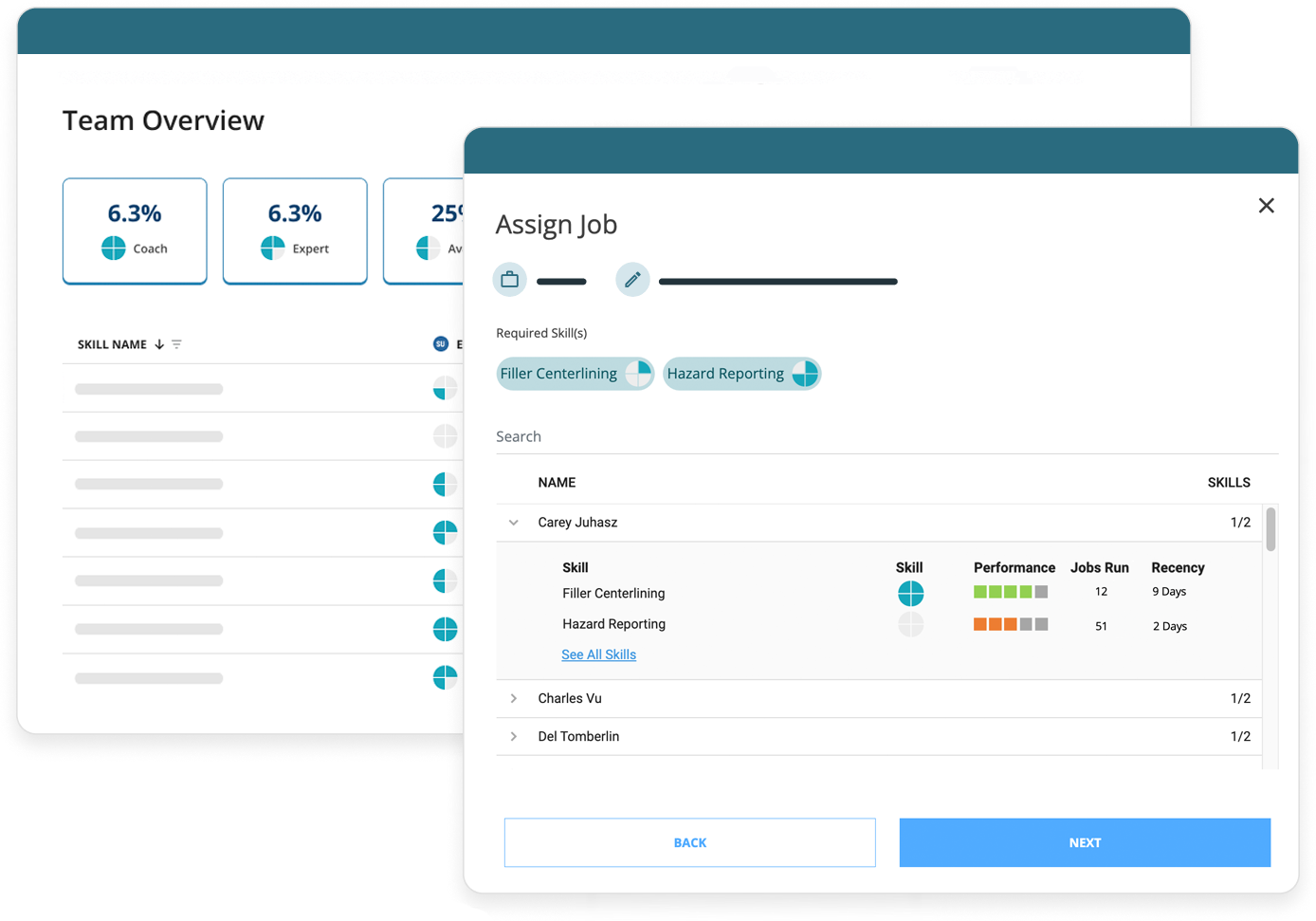Smart Skills Management software is helping manufacturers bridge the gap between training, skills, and work to build a more resilient and agile workforce.
Skills management and tracking software helps manufacturers identify and track employee expertise. You can map skills from a centralized library to individual workers, analyze the performance of your teams, and fill any skill gaps that exist.
These smart insights can help businesses improve their talent management strategy, including training and development programs and recruiting opportunities.
If you’re interested in learning how to find the best skills tracking software, explore this article as we cover:
- Benefits of skill management and tracking software
- What to look for in tracking software
- FAQs about skills tracking and management tools
- Why Augmentir
Benefits of skills tracking and management software
Skills management involves identifying workers’ expertise and experience to determine whether they’re a right fit for a role, which areas need improvement, and how to best facilitate learning opportunities. A reliable skills tracking and management software solution lets you keep track of what your employees can and can’t do, and integrates that information with the actual work being done.
Here are a few reasons why you should invest in a tracking tool:
Enhanced training and development programs: Improve employee engagement by making sure courses and training opportunities are relevant to the jobs they perform. Management software makes it easier to assign employee courses that are appropriate and timely, and then track each individual’s training progress.
A more productive workforce: Employees who have access to training resources can further develop their skills to better perform assigned job duties and maximize output. This will empower workers to strive for continuous improvement and grow in their roles.
Improved retention: Offering continuous development and training programs can help your employees feel appreciated and taken care of. In return, they are more likely to stay and do a good job. Considering that turnover rates cost manufacturing firms an overwhelming amount, it’s critical to invest in programs that will improve retention rates.
What to look for in tracking software
Knowing how to effectively track employee skills can be challenging, but the right software can ease the burden. It makes it easier to identify who is lacking which skills and how to best close the gap.
Unfortunately, standalone skills management software solutions that attempt to automate skills tracking fall short of meeting the needs of today’s manufacturers because they do not connect the “skills that workers know” with the “work being done”. These standalone skills management solutions may have been ideal for the stable, unchanging workforce of the past, but they are not suited for today’s era of high workforce variability.
Skills management solutions that combine skills tracking capabilities with connected worker technology and on-the-job digital guidance can deliver significant additional value. Data from actual work performance can inform workforce development investments allowing you to target your training, reskilling, and upskilling efforts where they have the largest impact.
When looking for the best skill management and tracking software, its critical to make sure it can:
- Keep a centralized database of competencies
- Pinpoint worker skill gaps
- Let management look for employees with specific expertise
- Track the skills of individual employees in a centralized database
- Intelligently assign work based on true worker skills and competencies
- Personalize on-the-job guidance based on worker skills and experience
- Create reports or dashboards to study competencies and skill gaps across departments
AI-powered software enables managers to filter through employee databases by skill to assemble teams best suited for a project.
Skill management solutions should also integrate with core human resources software to offer seamless sharing of employee data. Some tools may even work in tandem with corporate learning management systems to provide access to educational content that could help workers develop new abilities.
Lastly, HR can use skill management software to make it easier to follow compliance regulations that require evidence of employee capabilities or certifications. For example, a health manufacturing facility may need workers to upload certain certifications to show proof of compliance.
FAQs about skills tracking and management tools
How do you keep track of employee skills?
You can track employee skills using software that manages worker competencies. These programs should allow you to build customized job profiles, create reports to study competencies, and fill skill gaps.
What is skills software?
Skills software is a tool that helps manage and keep track of worker expertise and experience. It’s used by businesses to optimize job performance and boost worker productivity.
Should I invest in skills tracking software?
Manufacturing facilities can benefit from investing in software that provides an easy-to-use centralized database of worker profiles, training resources, and much more.
Why Augmentir
Augmentir can help manage the skills of your workforce with its AI-powered connected worker solution. Our skills management tools create visibility at all times to optimize training programs, track individual and team progress, and initiate more targeted training. Check out our live demo.




